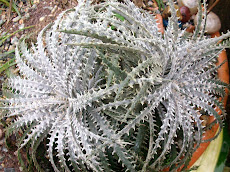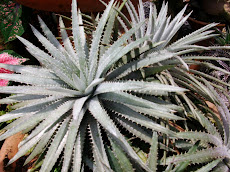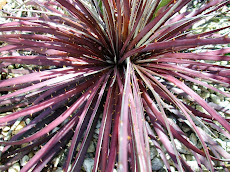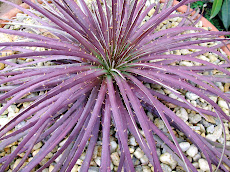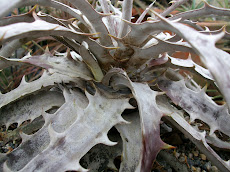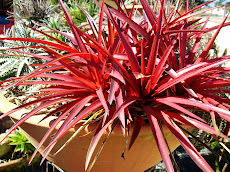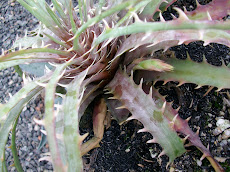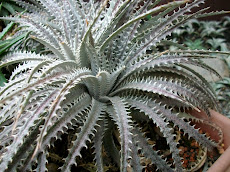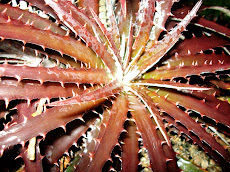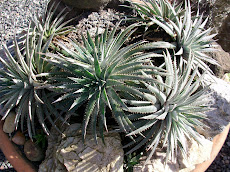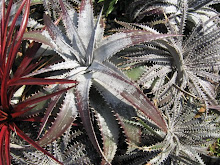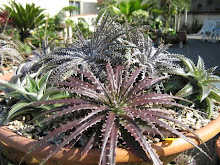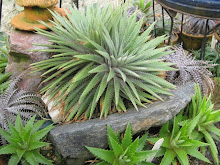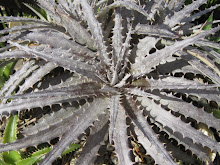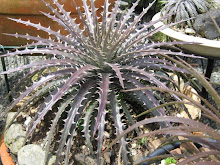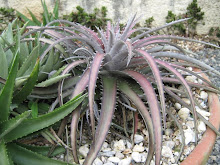
Beautiful? No! Dazzling stunning!
So rare and so beautiful we do not even touched this plant and we shall never collect it!
This is a Dyckia hebdingii! But...but..see it!
they are seedlings not crown divisions. Hebdingii present its most notable variation.
Variation? Yes, this is the way living creatures, animals, plants, fungi..respond to the climate or other possible variations. If one species is so fine and solid prepossessed creature without any variation how can it respond and survive to a drastic variation in climate?
Here we were under meters of ice for millions of years. We already were tropical hot, desert...
What you see here is a card withi the sleeve of the hebdingii species!
(Note: the pink flower is an oxalis.)

















































